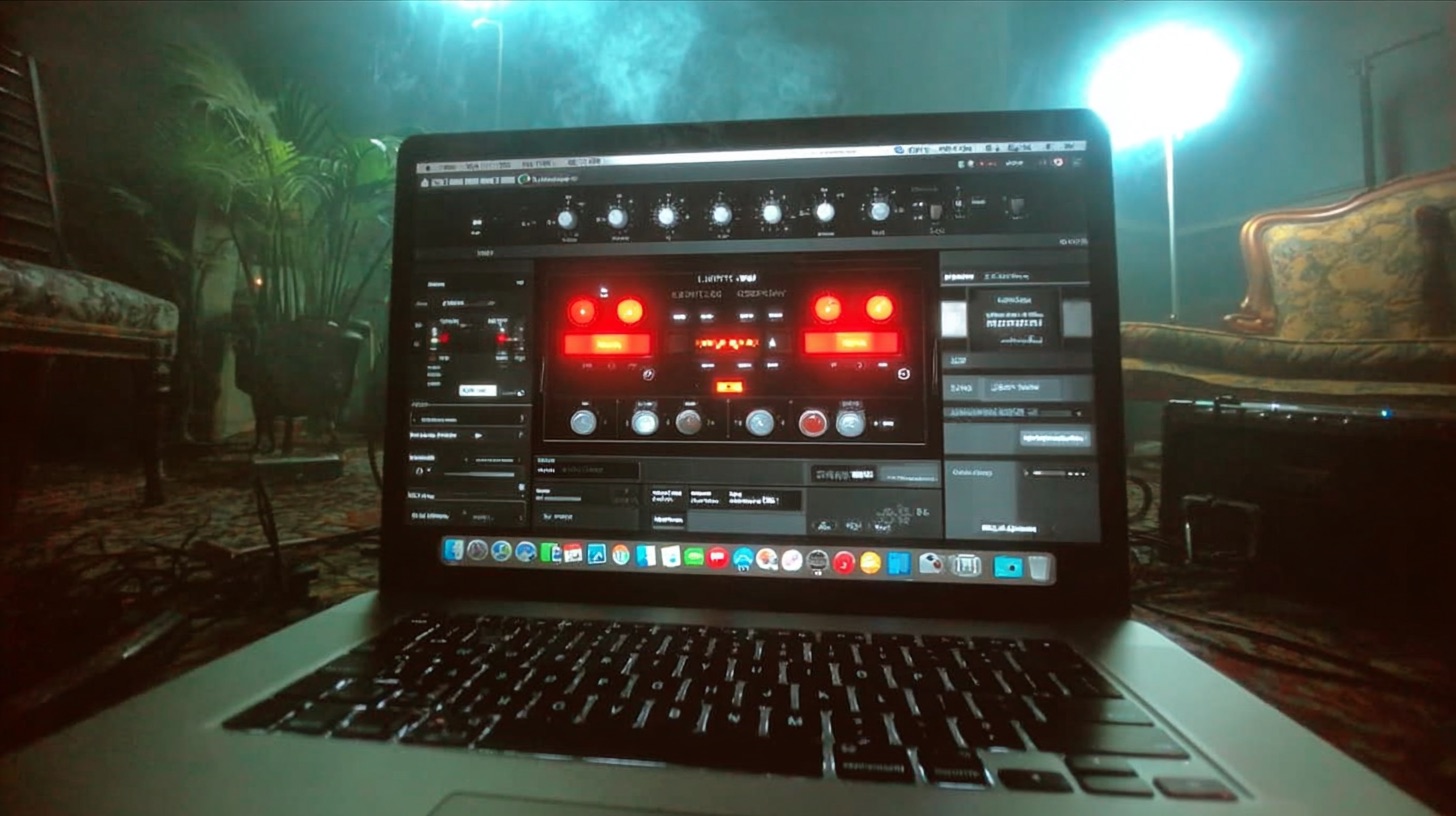
Crafting Mitch Lucker’s Insanely Brutal Suicide Silence Vocals
Nail The Mix Staff
Let’s be real: Mitch Lucker’s vocal performance is legendary. It’s pure, unfiltered aggression that defines the Suicide Silence sound. But when you’re in the producer’s chair, how do you take a vocal that’s already a 10 on the intensity scale and make it sit perfectly in a dense, punishing metal mix without losing an ounce of that raw power?
We got to see legendary producer Machine break down exactly how he tackled Mitch’s vocals from Suicide Silence’s iconic self-titled album. The goal wasn’t to tame the beast, but to give it more presence and dimension. His philosophy is simple but powerful: make it sound like “one guy who still wants to kill you,” speaking directly to the listener.
Here are the key techniques Machine used to make those vocals hit even harder.
Aggression First: The Compression Chain
When Machine first pulled up Mitch’s raw vocal track, he pointed out something crucial: it was already completely smashed. The waveform looked less like a dynamic vocal and more like a distorted guitar track. This isn’t a problem; it’s the starting point. The goal now is to shape that existing aggression.
Using Slow Attack for Added Snap
Instead of immediately reaching for a fast, aggressive compressor to clamp down on the vocal, Machine employs a classic trick. He often reaches for an LA-2A style compressor. This might seem counterintuitive, but the magic is in its characteristically slower attack time.
By using a slower compressor, the initial explosive pop of Mitch’s consonants—the ‘T’s, ‘K’s, and ‘P’s—slips through before the compressor fully engages. This split-second transient snap adds a percussive, aggressive edge that helps the vocal cut through the wall of guitars and drums. It’s a perfect example of how in-depth compression techniques go way beyond just controlling dynamics; they’re about enhancing character. He noted that even putting a slow compressor like this before another compressor can create this powerful effect.
Finding the “Evil” with EQ
With a vocal this intense, Machine’s approach to EQ isn’t about subtractive cleanup. It’s about finding the core of the aggression—what he calls the “evil” in the performance—and pushing it forward. He actively searches for the frequency ranges where Mitch’s character lives and boosts them to make the vocal even more in-your-face. This is what modern metal mixing is all about: enhancing the performance.
Of course, this aggressive approach can accentuate harshness, particularly sibilance (those sharp ‘S’ sounds). Machine acknowledges this, noting that he’ll deal with those specific frequencies later in the process, likely with a de-esser. This is a pro workflow: focus on the big, impactful moves first, and handle the surgical cleanup after. It’s one of the core strategies that separates a good mix from a great one.
The “Wider Shoulders” Trick: Smart Stereo Widening
This is where Machine’s genius really shines. He wants to make the mono vocal track feel wider and more dimensional without resorting to fake-sounding doublers that can muddy the focus. The goal is to give the single vocal performance “wider shoulders,” not to make it sound like two people.
The Go-To Tool: TC Electronic 2290
His secret weapon for this is a plugin emulation of the classic TC Electronic 2290 hardware delay unit. He uses a preset he’s relied on for decades: a super-short 20-millisecond delay with just a tiny bit of modulation. He sends the vocal to an auxiliary track with this plugin set to 100% wet.
The Mono-Compatibility Hack
Here’s the killer part of the technique. The 2290 has a feature that inverts the phase of the stereo output. On its own, this can create a weird, disorienting sound that can make you feel paranoid if you’re not careful. But it has a massive practical benefit: mono compatibility.
When your mix is played on a mono system (like a club PA, a phone speaker, or a Bluetooth speaker), the out-of-phase left and right signals of the effect perfectly cancel each other out. The widening effect simply disappears, leaving you with the clean, dry, mono vocal exactly as it was. This prevents the nasty, phasey, “bathroom” sound that plagues many stereo widening effects in mono and ensures your vocal level doesn’t unexpectedly drop.
This technique gives you the best of both worlds: a huge, wide vocal in stereo and a clear, punchy vocal in mono. It preserves that critical feeling of one singer, front and center, while adding immense size to the soundscape.
Bring It All Together (And See It in Action)
So, to get that monstrous Suicide Silence vocal sound, Machine’s approach boils down to:
- Smart Compression: Using a slow-attack compressor like an LA-2A to enhance transient aggression.
- Character EQ: Boosting the “evil” frequencies to push the performance’s intensity forward.
- Phase-Coherent Widening: Using a short, modulated delay with the TC 2290’s phase-invert trick for a wide stereo image that is perfectly mono-compatible.
These are powerhouse techniques you can start applying to your own metal mixes today. You can see Machine build this vocal mix from the ground up, with every plugin and decision explained, in his Suicide Silence Nail The Mix session.
Suicide Silence on Nail The Mix
Machine mixes "Wake Up"
Get the Session
But imagine going beyond just vocals. Nail The Mix gives you the chance to be a fly on the wall every single month as the world’s best producers mix legendary songs from artists like Gojira, Periphery, and Lamb of God. You get the raw multitracks to mix yourself and then watch the original producer show you how it’s done.
If you’re ready to move past presets and learn how pro mixes are really made, it’s time to unlock your sound. See exactly how Machine dialed in these brutal tones and so much more in the Suicide Silence session on Nail The Mix.







